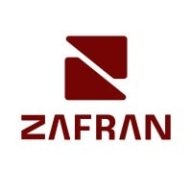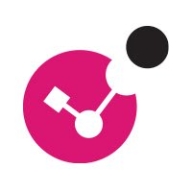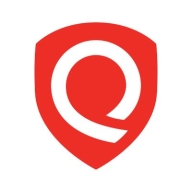


Qualys VMDR and Check Point CloudGuard CNAPP are competitors in the cloud security space, focusing on vulnerability management and policy compliance. Based on user feedback, Check Point CloudGuard CNAPP seems to have an edge in threat detection and compliance, offering comprehensive threat detection and identity protection in cloud environments.
Features: Qualys VMDR is highly valued for its vulnerability management, policy compliance, and asset management. Users appreciate its scalability and automated patching capabilities. Continuous monitoring is another notable feature. Check Point CloudGuard CNAPP excels in workload protection, compliance checks, and comprehensive threat detection. Its identity protection capabilities and detailed reporting are significant advantages highlighted by users.
Room for Improvement: Qualys VMDR users seek better reporting, easier integration, and more intuitive dashboards. False positives and improved support are also concerns. Check Point CloudGuard CNAPP could enhance its documentation and interoperability with third-party tools, as well as reduce false positives. There is also a need for more robust automation and integration features.
Ease of Deployment and Customer Service: Qualys VMDR provides flexible deployment options across cloud environments, with feedback on customer service varying from excellent to needing quicker response times. Deployment is generally straightforward with good support, although some users criticize the technical support speed. Check Point CloudGuard CNAPP is noted for its ease of deployment, often praised for customer support and responsiveness. Its focus on cloud-native applications aids integration, though customer support interactions could be improved.
Pricing and ROI: Qualys VMDR is viewed as expensive, with some users preferring better annual discounts and pricing flexibility. The investment is justified by its features, though smaller organizations may find the cost a barrier. Check Point CloudGuard CNAPP's pricing is seen as reasonable given its capabilities, but users desire more flexible licensing. Both solutions are praised for significant ROI and operational efficiencies, with Check Point noted for scalable pricing models.
| Product | Market Share (%) |
|---|---|
| Qualys VMDR | 6.4% |
| Check Point CloudGuard CNAPP | 1.3% |
| Zafran Security | 1.0% |
| Other | 91.3% |



| Company Size | Count |
|---|---|
| Small Business | 51 |
| Midsize Enterprise | 17 |
| Large Enterprise | 57 |
| Company Size | Count |
|---|---|
| Small Business | 20 |
| Midsize Enterprise | 12 |
| Large Enterprise | 69 |
Zafran Security integrates with existing security tools to identify and mitigate vulnerabilities effectively, proving that most critical vulnerabilities are not exploitable, optimizing threat management.
Zafran Security introduces an innovative operating model for managing security threats and vulnerabilities. By leveraging the threat exposure management platform, it pinpoints and prioritizes exploitable vulnerabilities, reducing risk through immediate remediation. This platform enhances your hybrid cloud security by normalizing vulnerability signals and integrating specific IT context data, such as CVE runtime presence and internet asset reachability, into its analysis. No longer reliant on patch windows, Zafran Security allows you to manage risks actively.
What are the key features of Zafran Security?
What benefits can users expect from Zafran Security?
In industries where security is paramount, such as finance and healthcare, Zafran Security provides invaluable protection by ensuring that only exploitable vulnerabilities are addressed. It allows entities to maintain robust security measures while allocating resources efficiently, fitting seamlessly into existing security strategies.
Check Point CloudGuard CNAPP offers comprehensive cloud security with features like dynamic access control, asset protection, and compliance checks, tailored for organizations seeking enhanced governance across AWS, Azure, and GCP platforms.
Check Point CloudGuard CNAPP provides robust capabilities, including centralized firewall management, IAM scanning, and real-time visibility. Its strengths lie in predictive visualization, threat intelligence, and auto-remediation, making it a valuable tool for risk mitigation and compliance management. The platform's integration and responsiveness enhance cloud security, ensuring alignment with industry standards and effective threat protection.
What are the key features of Check Point CloudGuard CNAPP?Organizations in finance, healthcare, and retail frequently implement Check Point CloudGuard CNAPP for compliance and security across cloud environments. It assists with workload protection, threat detection, and regulatory obligation fulfillment, proving effective for securing applications and monitoring API interactions.
Vulnerability Management, Detection, and Response (VMDR) is a cornerstone product of the Qualys TruRisk Platform and a global leader in the enterprise-grade vulnerability management (VM) vendor space. With VMDR, enterprises are empowered with visibility and insight into cyber risk exposure - making it easy to prioritize vulnerabilities, assets, or groups of assets based on business risk. Security teams can take action to mitigate risk, helping the business measure their actual risk exposure over time.
Qualys VMDR offers an all-inclusive risk-based vulnerability management solution to prioritize vulnerabilities and assets based on risk and business criticality. VMDR seamlessly integrates with configuration management databases (CMDB), Qualys Patch Management, Custom Assessment and Remediation (CAR), Qualys TotalCloud and other Qualys and non-Qualys solutions to facilitate vulnerability detection and remediation across the entire enterprise.
With VMDR, users are empowered with actionable risk insights that translate vulnerabilities and exploits into optimized remediation actions based on business impact. Qualys customers can now aggregate and orchestrate data from the Qualys Threat Library, 25+ threat intelligence feeds, and third-party security and IT solutions, empowering organizations to measure, communicate, and eliminate risk across on-premises, hybrid, and cloud environments.
We monitor all Vulnerability Management reviews to prevent fraudulent reviews and keep review quality high. We do not post reviews by company employees or direct competitors. We validate each review for authenticity via cross-reference with LinkedIn, and personal follow-up with the reviewer when necessary.